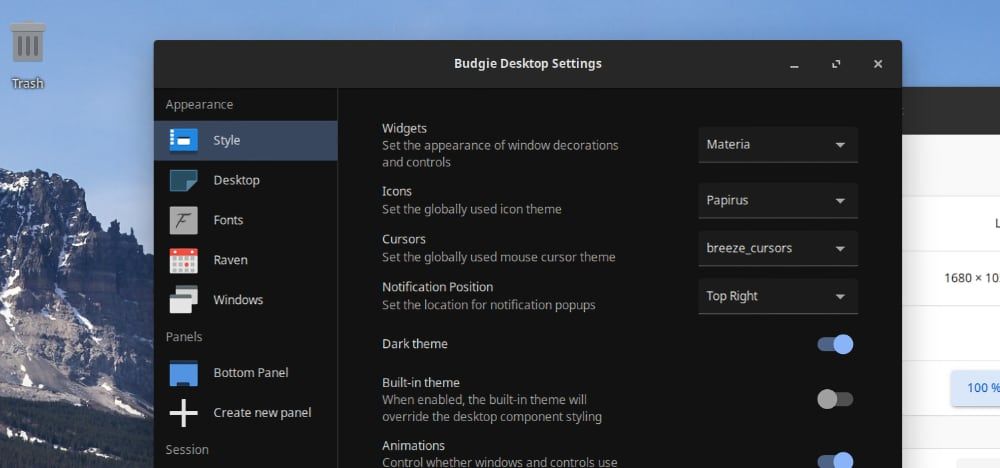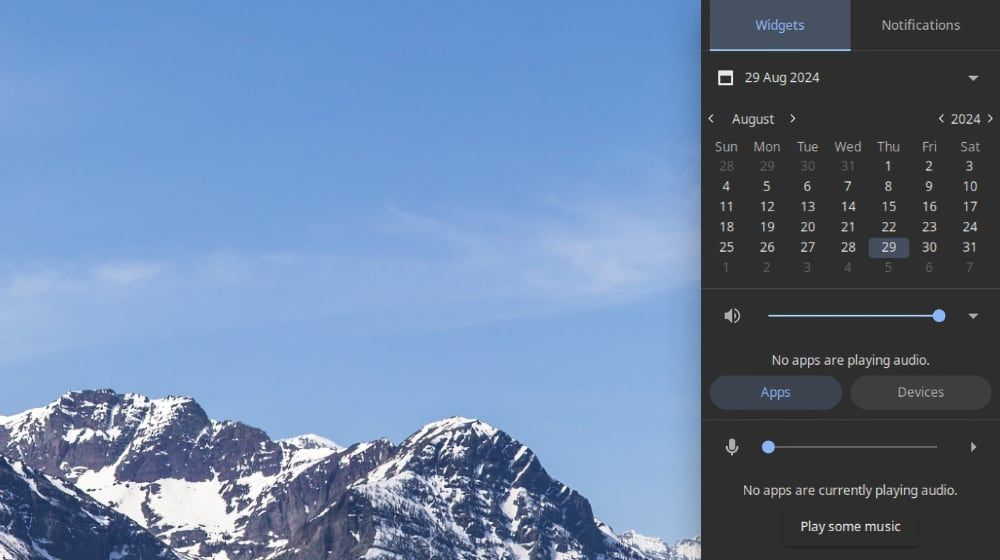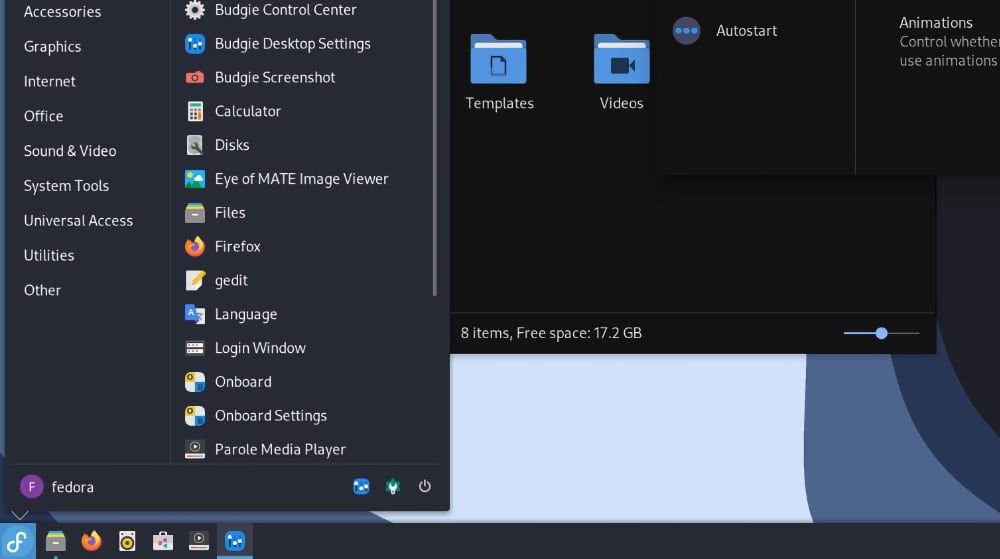Key Takeaways
- Budgie is a desktop environment for Linux computers that emphasizes easy personalization and a fast, familiar layout.
- Budgie borrows from the GNOME environment, offers lighter resource usage compared to KDE Plasma, and features the Raven sidebar.
- Budgie can be installed on existing Linux distributions easily, but popular distros like EndeavourOS, Fedora, and Ubuntu offer pre-installed editions.
The Linux desktop is a more fluid concept than it is with Windows or macOS. Budgie takes an approach to the desktop that is both eminently customizable and refreshingly familiar. Learn what makes Budgie special, and whether it’s the right desktop for you.
What is Budgie?
Budgie is one of many desktop environments available for Linux, which may not be a familiar concept if you’re coming from Windows or macOS. On those systems, the desktop is tightly coupled with the underlying operating system, while Linux lets you mix and match components much more freely. The desktop environment on Linux handles everything you see and interact with, for the most part.
The most widely used Linux desktop is GNOME, which is often installed by default with many new Linux distributions, and that has been the case for quite some time. Budgie uses many of the components of GNOME desktop, but aims to take a fairly traditional approach to the desktop. GNOME has a more unique approach to the desktop, on the other hand.
Budgie was initially developed as the desktop for a new Linux distribution, now known as Solus linux. The first public version was released in 2014, and by 2015 other distributions had also started to include the Budgie desktop.
Since then, Budgie has moved on from being the official desktop of any single distribution. Now, the aim is to provide a desktop that works well on any system.
What Makes Budgie Unique?
Budgie desktop aims for a more traditional desktop paradigm than GNOME, but another aim is to offer a wider level of customization. While you need to install extensions and other tools to tweak GNOME to your liking, Budgie offers a much deeper level of customization out of the box. For example, the Budgie website shows off layouts that mimic Windows, macOS, and even Ubuntu.
This combination of offering a more traditional desktop approach and easy customization may sound familiar if you’ve used KDE, another popular desktop environment. While there are similarities between Budgie and KDE Plasma, there are important differences. Budgie uses GNOME components and many default apps, while KDE has its own suite of apps. Budgie is also generally lighter on resources, while KDE offers even deeper customization.
One especially useful aspect of the Budgie desktop is Raven, a sidebar that combines notifications, your calendar, your currently playing music, and more. In the default Budgie layout, this sits on the right side of the screen, right where you’d find similar info on recent versions of Windows.
Budgie’s release cadence hasn’t been especially quick in recent years. While 2023 saw some new features, like support for dark style preferences, recent releases have focused on fixing bugs. This means that new features haven’t come in leaps and bounds.
That isn’t to say that new features aren’t on the way. Budgie 11 is in development, but work seems to be going relatively slowly. One of the features in developement is support for the Wayland replacement for Xorg, but other new features like a new Control Panel and support for third-party widgets in Raven are planned as well.
How to Get Budgie
While Budgie may have begun as the desktop for Solus Linux, there is no “correct” or ideal way to use the desktop enviroment these days. There are two ways to start using Budgie: install a Linux distribution that runs Budgie out of the gate, or add it to your existing Linux installation, if you have one.
If you’re already running a distribution that you’re reasonably happy with, but you want to try a new desktop, it may be worth simply installing Budgie. Especially if you’re already using GNOME, Budgie will use many of the same components and apps.
On the other hand, if you’re looking for a clean slate, installing a new distribution running Budgie from the start can let you craft your workflow around it. This also makes it easier to try the distribution out in a virtual machine if you aren’t sure you want to install a new desktop on your actual hardware.
Installing Budgie on Your Existing Linux Distribution
Budgie is available in the software repositories of many popular Linux distributions, but not all of them. The easiest way to see if it’s avaiable on your distribution is to check the getting Budgie section of the Budgie website.
Install Budgie on Ubuntu
While you can get a specific version of Ubuntu that runs Budgie out of the box (mentioned in the next section), you can also easily install it on your existing Ubuntu install. Just enter the two commands below.
sudo apt update
sudo apt install ubuntu-budgie-desktop Install Budgie on Fedora
Similarly to Ubuntu, there is a Fedora “Spin” that runs Budgie, but it’s easy to install Budgie on any Fedora installation.
sudo dnf update
sudo dnf install budgie-desktop Install Budgie on Arch
The instructions for installing Budgie on Arch are slightly more complex than those for the above two distributions, but it’s still fairly easy. Enter the following commands.
sudo pacman -S budgie lightdm-gtk-greeter
sudo pacman -S arc-gtk-theme papirus-icon-theme network-manager-applet
sudo systemctl enable After you’ve completed the above steps for any distribution, log out, and you should be able to choose Budgie from the login menu. If you run into any issues, check the documentation on the Budgie website.
Linux Distributions That Ship With Budgie
As mentioned earlier in this article, there was a time when Solus was the obvious Linux distribution to choose if you were installing Budgie. Following the decision to not focus on a single distribution, the choice of ideal distribution for installing Budgie isn’t as simple.
The first distribution listed on the Budgie desktop website is EndeavourOS. This is a distribution built on top of Arch Linux that adds an easy to use installer and the ability to install several difference desktops, Budgie included. The Fedora Budgie Spin is also listed. This is also available as an immutable Linux distribution.
Ubuntu’s Budgie version and NixOS are also listed as easy ways to get up and running on the Budgie website. Other Linux distributions including Arch and OpenSuSE, and even FreeBSD are also available to install running Budgie relatively easily, though not as easily as the other methods listed here.
While work on Budgie hasn’t been progressing at the same rapid pace as some other distributions, it is still receiving regular bugfix updates as work on the next version continues. There is no release date set for Budgie 11 at the time of writing, but work seems to be progressing according to updates on the Buddies of Budgie website.







